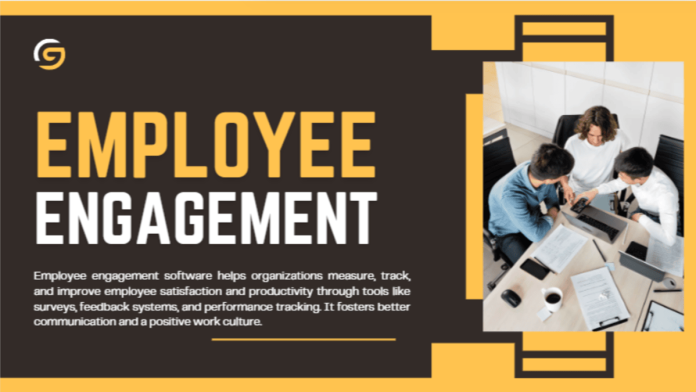In today’s changing work environment, employee engagement has become a key element for organizational success. These tools help build a positive workplace culture by improving communication, offering real-time feedback, and recognizing employee accomplishments. This article guides you to the top 10 employee engagement tools to help companies create a motivated and productive team.
What is Employee Engagement Software?
Employee engagement software helps improve employee satisfaction, motivation, and productivity. These tools support communication, collaboration, and recognition among employees, creating a positive work environment. Key features include surveys, performance feedback, and recognition programs, along with analytics to track engagement. By using these tools, companies can boost morale, retain employees, and achieve better results, especially with remote teams.
Key Features of Employee Engagement Software
Employee engagement software boosts employee satisfaction, motivation, and productivity by offering tools for communication, recognition, feedback, and performance tracking. Key features include:
1. Surveys and Feedback Mechanisms
Employee engagement software often includes robust survey and feedback tools, such as pulse surveys and annual assessments, which allow organizations to gauge employee sentiment and satisfaction in real-time. These mechanisms enable management to identify potential issues before they escalate, fostering a proactive approach to employee engagement. By regularly soliciting feedback, companies demonstrate their commitment to continuous improvement, which can strengthen employee loyalty and enhance overall engagement.
2. Recognition and Rewards System
A vital feature of employee engagement software is its ability to facilitate recognition and rewards for employee achievements. This includes peer-to-peer recognition tools, public acknowledgments, and structured rewards programs that celebrate both small wins and significant milestones. Such recognition not only boosts morale but also fosters a culture of appreciation within the organization, motivating employees to perform at their best and reinforcing positive behaviors.
3. Performance Management
Integrating performance management tools within employee engagement software allows for continuous tracking of employee performance against set goals. Features such as goal-setting frameworks (like OKRs), regular check-ins, and performance reviews help align individual contributions with organizational objectives. This transparency promotes accountability and encourages employees to take ownership of their development, ultimately leading to improved productivity and job satisfaction.
4. Analytics and Reporting
Comprehensive analytics and reporting capabilities are essential components of effective employee engagement software. These tools provide valuable insights into engagement levels, sentiment trends, and areas needing improvement. By leveraging data-driven insights, organizations can make informed decisions about their engagement strategies, enabling them to tailor initiatives that resonate with their workforce and enhance overall workplace culture.
5. Integration Capabilities
For employee engagement software to be truly effective, it must seamlessly integrate with existing HR systems (HRIS), customer relationship management (CRM) tools, and productivity applications. This integration ensures a unified workflow across platforms, reducing redundancy and enhancing user experience. By connecting various systems, organizations can streamline processes and ensure that all employee data is centralized for better decision-making.
6. Mobile Accessibility
With the rise of remote work and deskless employees, mobile accessibility has become a crucial feature of employee engagement software. Platforms designed with mobile-first functionality allow employees to engage with the software from any device—be it smartphones or tablets—ensuring that all team members can participate in engagement initiatives regardless of their location. This flexibility enhances connectivity among teams and promotes a more inclusive workplace culture.
7. Enhanced Communication Tools
Effective communication is key to fostering employee engagement, and many software solutions offer features that facilitate open dialogue between employees and management. This includes internal messaging systems, activity feeds, and announcement boards that keep everyone informed about company news and updates. By promoting transparent communication channels, organizations can strengthen relationships among employees, enhance collaboration, and create a sense of community within the workplace.
8. Personalized Development Plans
Employee engagement software often incorporates tools for creating personalized development plans tailored to individual career aspirations. By offering targeted learning opportunities, mentorship programs, and skill development resources, organizations can empower employees to take charge of their professional growth. This investment in personal development not only improves retention rates but also fosters a culture of continuous learning within the organization.
Benefits of Employee Engagement Software
Employee engagement software offers numerous benefits that significantly enhance workplace culture, employee satisfaction, and overall organizational performance. Here are some key benefits:
1. Improved Communication
Employee engagement software facilitates open and transparent communication channels across the organization. By enabling real-time feedback, discussions, and collaboration among employees, teams, and management, these platforms foster a culture of transparency and trust. This improved communication ensures that everyone is informed and aligned with the company’s objectives, reducing misunderstandings and enhancing teamwork.
2. Increased Employee Satisfaction
Providing a platform for employees to voice their opinions, receive acknowledgment, and contribute ideas enhances morale and job satisfaction. Engagement software empowers employees by giving them a voice in the organization, leading to higher levels of satisfaction. When employees feel valued and heard, they are more likely to be committed to their work and the organization.
3. Enhanced Productivity
Engaged employees are more motivated and committed to their work. Employee engagement software provides tools to recognize and reward employees, solicit feedback, and address concerns effectively. This leads to increased productivity as employees become more invested in their roles and contribute positively to the organization’s success.
4.Reduced Turnover Rates
Creating a positive work environment through employee engagement software increases satisfaction and retention. Engaged employees are less likely to leave their jobs, which reduces turnover costs associated with hiring and training new staff. By fostering loyalty among employees, organizations can preserve institutional knowledge and maintain continuity in their operations.
5. Better Decision-Making
Employee engagement software equips leaders with real-time data and analytics about employee sentiment and engagement levels. This information enables management to make informed decisions regarding employee initiatives, identify trends, and proactively address issues before they escalate. Data-driven decision-making enhances overall organizational performance by aligning strategies with employee needs.
6. Enhanced Employee Recognition
Features for recognizing and rewarding achievements boost morale, reinforce positive behaviors, and strengthen employee-organization bonds. When employees receive recognition for their contributions, it fosters a culture of appreciation that motivates them to perform at their best. This recognition can come from peers or management, creating a supportive environment where achievements are celebrated.
7. Increased Collaboration
Employee engagement software often includes tools for collaboration and knowledge sharing that foster a culture of teamwork, innovation, and inclusivity. By facilitating easy communication among team members, these platforms encourage collaboration on projects and initiatives, leading to improved outcomes and a stronger sense of community within the organization.
8. Enhanced Employer Branding
Focusing on employee engagement demonstrates a commitment to creating a positive work environment, which enhances the organization’s reputation. A strong employer brand attracts top talent as potential candidates are drawn to companies known for valuing their employees’ well-being and satisfaction.
Choose the Right Employee Engagement Tool for Organizations
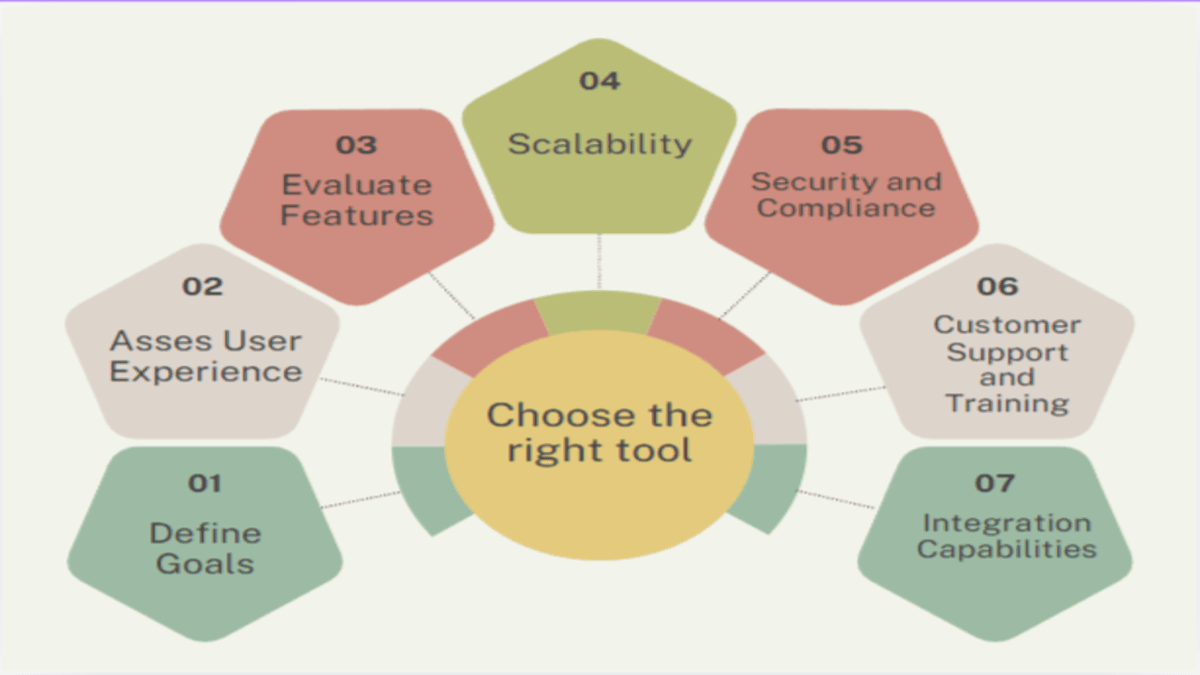
Choosing the right employee engagement software for your organization is crucial for fostering a motivated and productive workforce. Here are some key considerations to guide your selection process:
1. Define Your Goals and Needs
Start by clearly defining the specific challenges you aim to address with employee engagement software. Are you looking to improve communication, enhance employee recognition, or gather real-time feedback? Identifying these goals will help you determine the essential features and functionalities required from the software.
2. Assess User Experience
Select software with a user-friendly interface that is easy for both employees and administrators to navigate. A platform that is intuitive and accessible across various devices ensures higher adoption rates among users, making it easier for everyone to engage with the tool effectively.
3. Evaluate Features
Look for comprehensive features that address your organization’s engagement needs. Essential functionalities may include feedback mechanisms, recognition programs, pulse surveys, performance management tools, and communication channels. Ensure that the software can support your specific engagement strategies.
4. Consider Integration Capabilities
Choose a solution that integrates seamlessly with your existing HR systems and other essential tools. This integration enhances efficiency by allowing for data consistency and reducing redundant tasks, ultimately streamlining workflows across the organization.
5. Scalability
Select software scalability that can grow with your organization as it evolves. Ensure that the platform can accommodate changes in workforce size and engagement strategies without compromising performance. This flexibility will be essential as your organization expands.
6. Security and Compliance
Prioritize software that adheres to top security standards, such as GDPR and HIPAA, to protect sensitive employee data. Verify how the software encrypts data, controls access, and implements security measures to mitigate risks associated with data breaches.
7. Customer Support and Training
Assess the vendor’s customer support offerings to ensure a smooth implementation process and ongoing assistance. Look for comprehensive training resources, responsive support channels, and dedicated account management to help your team maximize the software’s potential.
8. Cost-Effectiveness
Evaluate pricing plans to find a solution that aligns with your budget while providing the best value for your organization. Consider the total cost of ownership, including licensing fees, implementation costs, and ongoing maintenance expenses.
Employee Engagement Software Tool List
| Platform | Best For | Pricing |
|---|---|---|
| Leapsome | Best Overall All-in-One Tool | Custom Pricing Plan |
| PerformYard | Best for Continuous Feedback Solutions | $1-3 Per User Per Month |
| Motivosity | Best for Positive Manager/Employee Engagement | Custom Pricing Plan |
| 15Five | Best for Measuring Engagement | Starts at $4 per user per month |
| Connecteam | Best for Deskless Teams | Starts at $29 per month for up to 30 users |
| Workvivo | Best for App Integrations | Starts at $20,000 for 250-2000 employees |
| Mitratech Trakstar | Best for New Hire and Career Development | Custom Pricing Plan |
| Qualtrics | Best for Enterprise-Level Inclusive Engagement | Custom Pricing Plan |
| WorkTango | Best Employee Experience Platform | Custom Pricing Plan |
| Cooleaf | Best for Gamified Engagement | Custom Pricing Plan |
1. Leapsome: Best Overall All-in-One Tool
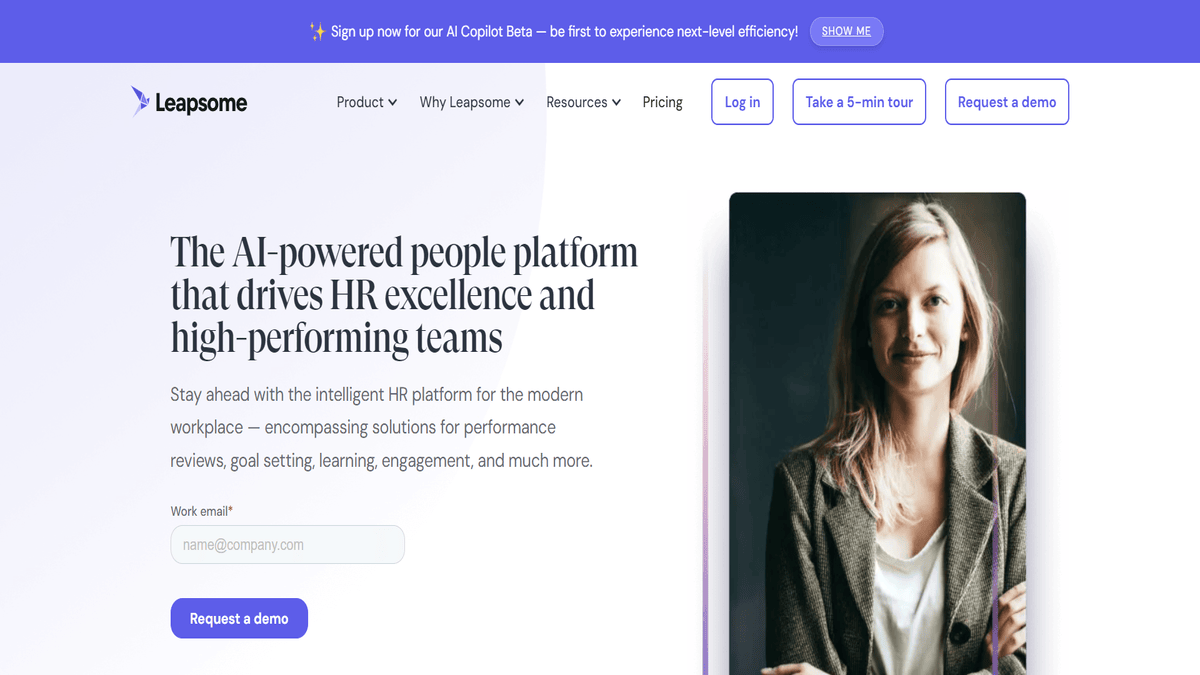
Leapsome stands out as a comprehensive employee engagement platform that integrates performance management, employee feedback, and learning into a single solution. Its personalized development paths and continuous feedback capabilities make it an ideal choice for organizations focused on employee growth and satisfaction. Key features include goal setting, OKR tracking, pulse surveys, and learning modules.
Pros:
- Comprehensive features including goal setting and pulse surveys.
- Strong focus on personalized development paths.
Cons:
- Some users report a steep learning curve.
Pricing: Custom Pricing Plan based on needs
2. PerformYard: Best for Continuous Feedback Solutions
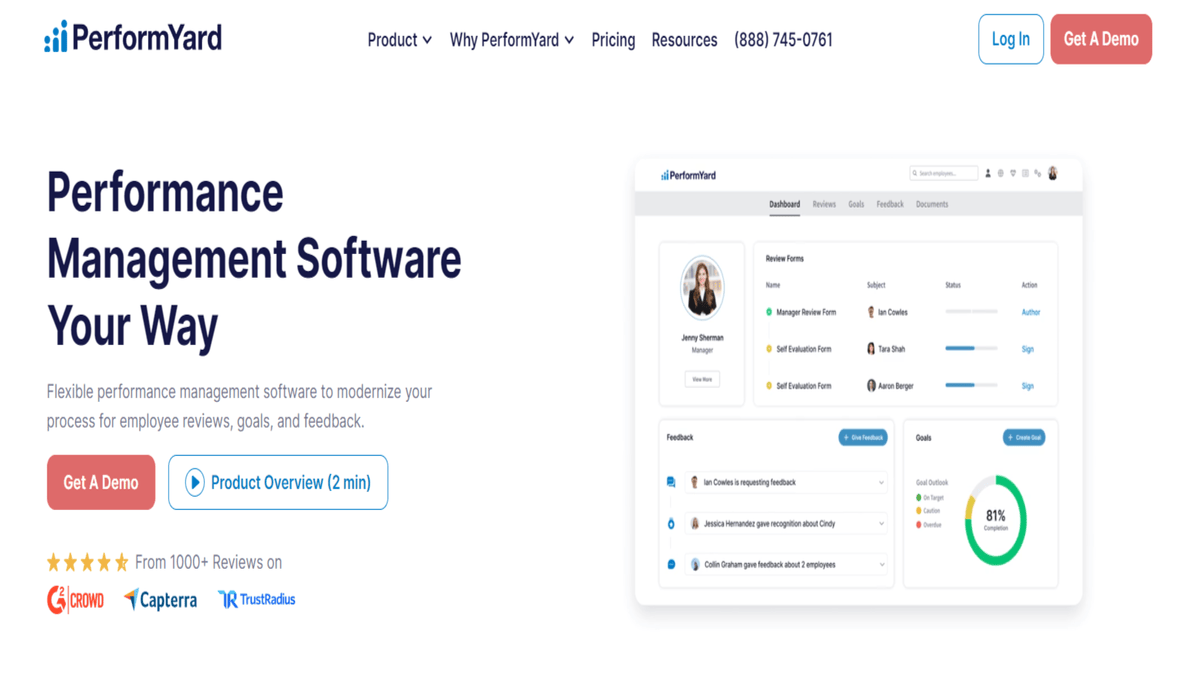
PerformYard excels in enabling continuous feedback between employees and managers. Its user-friendly interface allows for real-time feedback and customizable performance review templates, making it perfect for performance-driven organizations. Features such as goal tracking and one-on-one meeting scheduling further enhance its utility.
Pros:
- Customizable performance review templates.
- Real-time feedback capabilities enhance communication.
Cons:
- Limited integrations with other HR tools.
Pricing: Pricing Plan Starts from $1-3 Per User Per Month
3. Motivosity: Best for Fostering Positive Manager/Employee Engagement
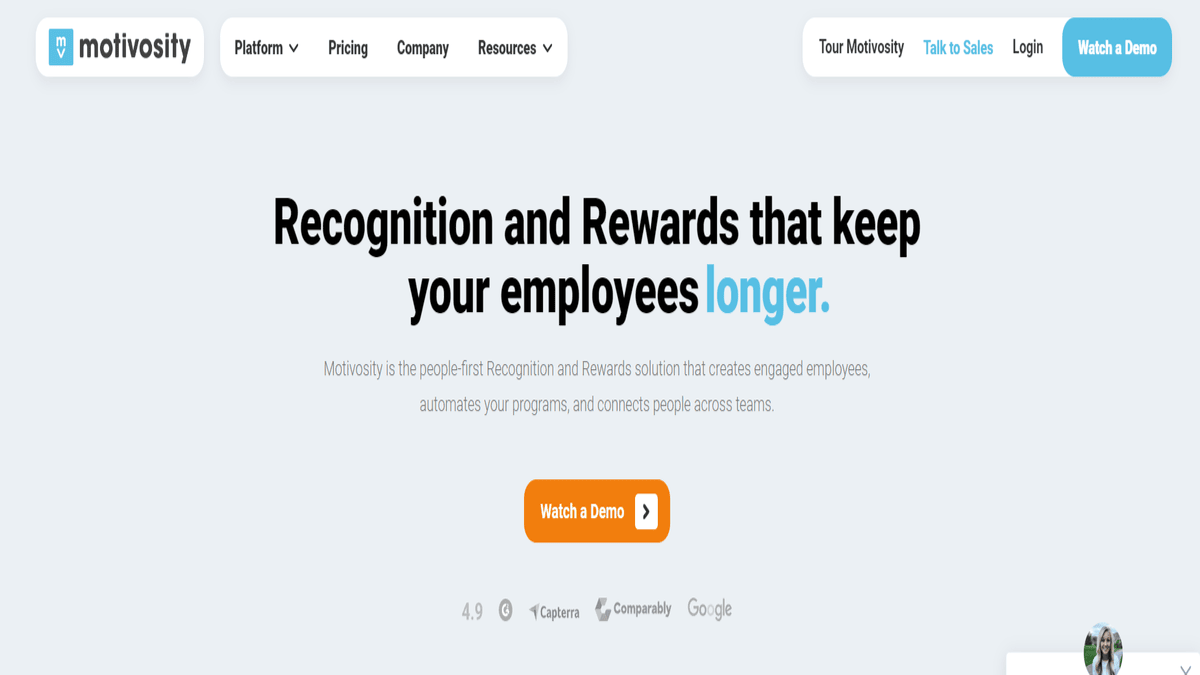
Motivosity is designed to strengthen relationships between employees and managers through peer recognition and personalized one-on-one meetings. This platform emphasizes building a culture of appreciation, making it ideal for organizations looking to enhance manager-employee connections. Key features include peer recognition tools, rewards systems, and performance tracking.
Pros:
- Emphasizes peer recognition and rewards.
- User-friendly interface promotes engagement.
Cons:
- May lack advanced analytics features compared to competitors.
Pricing: Custom Pricing Plan Based on Needs.
4. 15Five: Best for Measuring Engagement
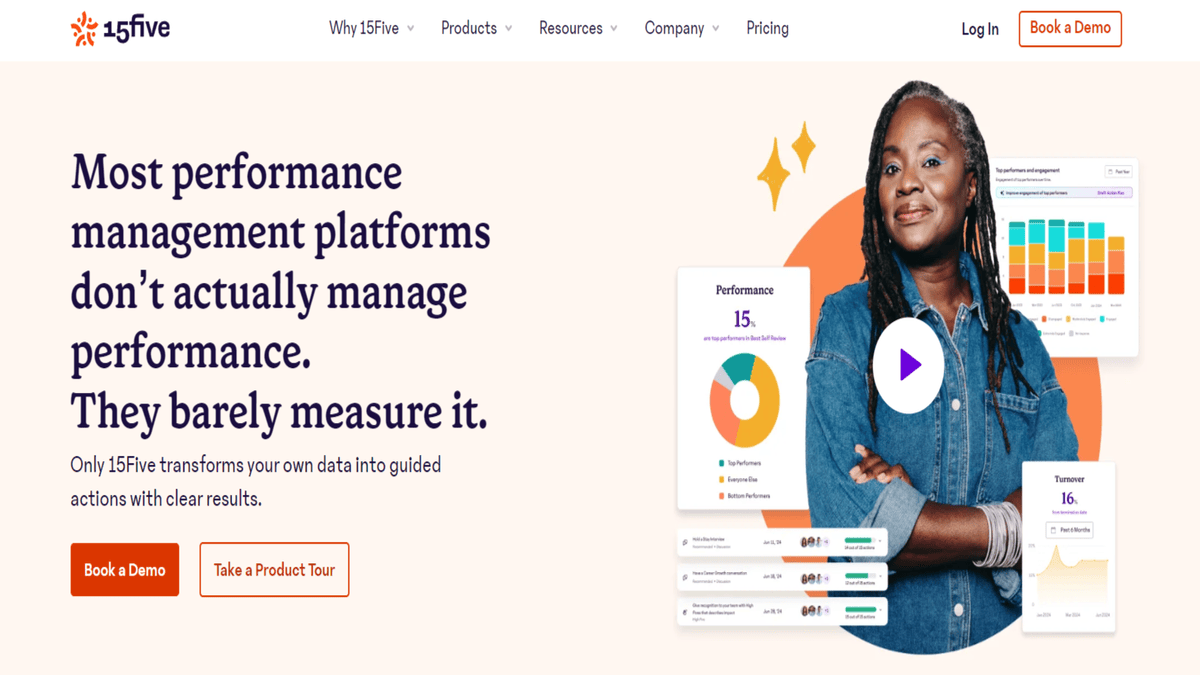
With its science-backed surveys and frequent check-ins, 15Five helps organizations track and improve engagement levels effectively. It provides actionable insights through engagement surveys, OKR tracking, and career development tools, making it an excellent choice for companies prioritizing continuous feedback.
Pros:
- Science-backed surveys provide actionable insights.
- Features like OKR tracking support goal alignment.
Cons:
- Some users find the interface cluttered.
Pricing: Starts at $4 per user per month
5. Connecteam: Best for Deskless Teams
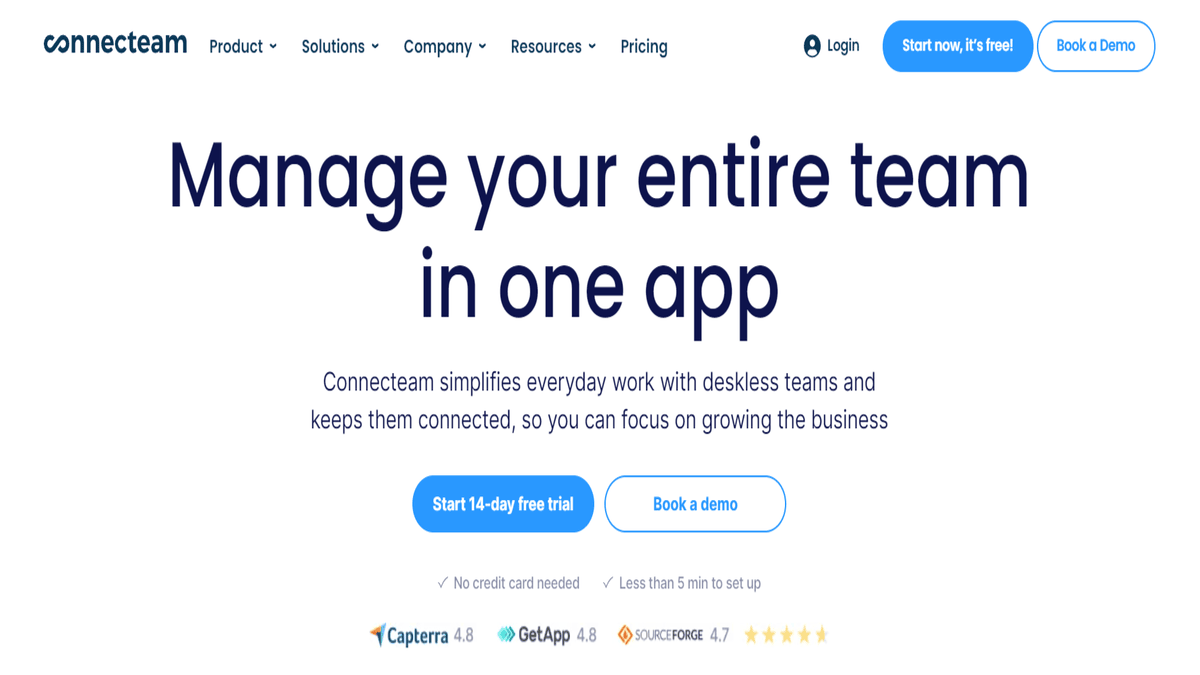
Connecteam is tailored for mobile and remote workers, ensuring that deskless employees remain connected with their teams. Its mobile-first interface includes task management tools, internal communication features, and time tracking capabilities, making it perfect for organizations with a distributed workforce.
Pros:
- Excellent mobile capabilities for remote workers.
- Task management features enhance productivity.
Cons:
- Limited desktop functionality compared to mobile app.
Pricing: Starts at $29 per month for up to 30 users
6. Workvivo: Best for App Integrations
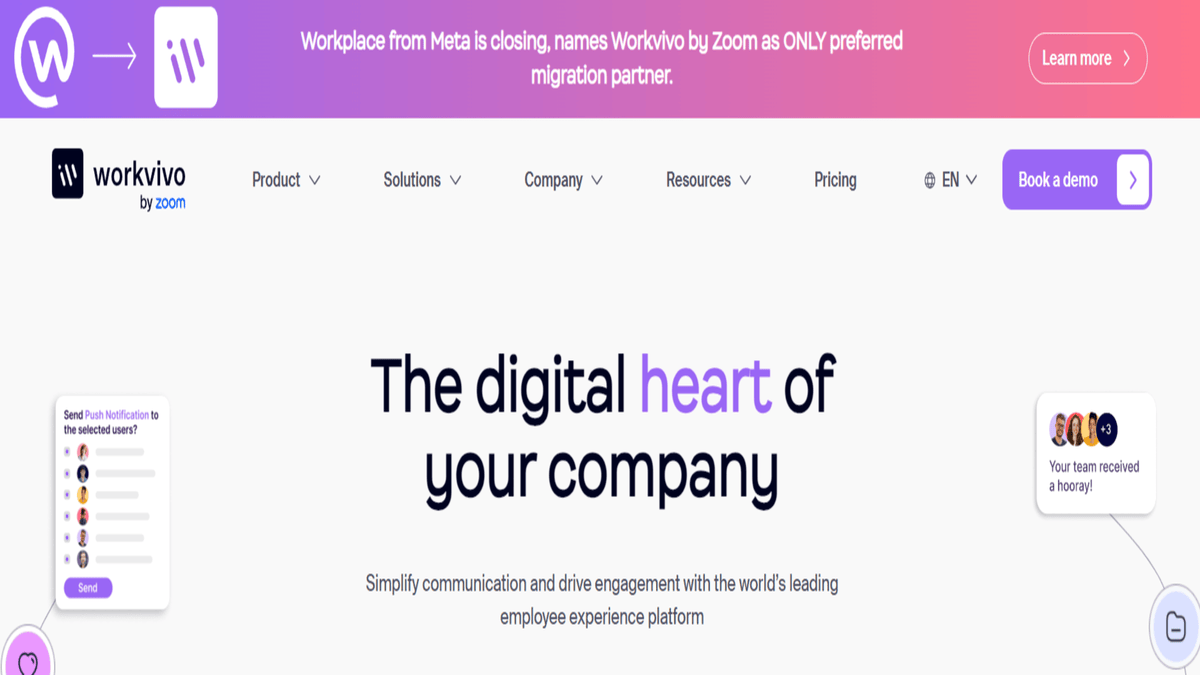
Workvivo enhances collaboration through its internal social network while integrating seamlessly with popular tools like Slack and Microsoft Teams. This platform is designed to foster team interaction and engagement through social networking features, recognition tools, and engagement surveys.
Pros:
- Strong focus on social interaction boosts team morale.
- Comprehensive recognition tools enhance employee appreciation.
Cons:
- May require time to set up effectively within existing workflows.
Pricing: Pricing Plan Starts at $20,000 for 250-2000 employees
7. Mitratech Trakstar: Best for New Hire and Career Development
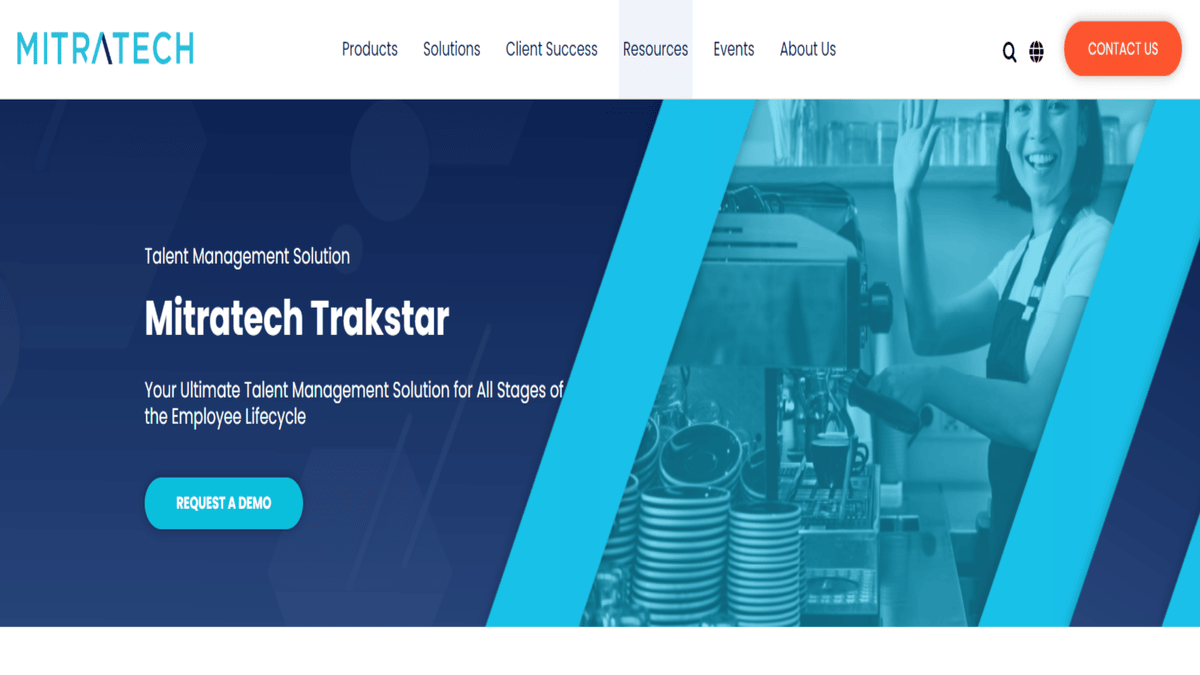
Mitratech Trakstar focuses on onboarding, performance tracking, and career development to ensure employees feel supported throughout their journey within the organization. Key features include onboarding tools, goal tracking, and 360-degree feedback mechanisms.
Pros:
- Robust onboarding features ensure new hires feel welcomed.
- Goal tracking aligns individual objectives with organizational goals.
Cons:
- Some users report challenges with customer support responsiveness.
Pricing: Custom pricing plan based on needs.
8. Qualtrics: Best for Enterprise-Level Inclusive Engagement
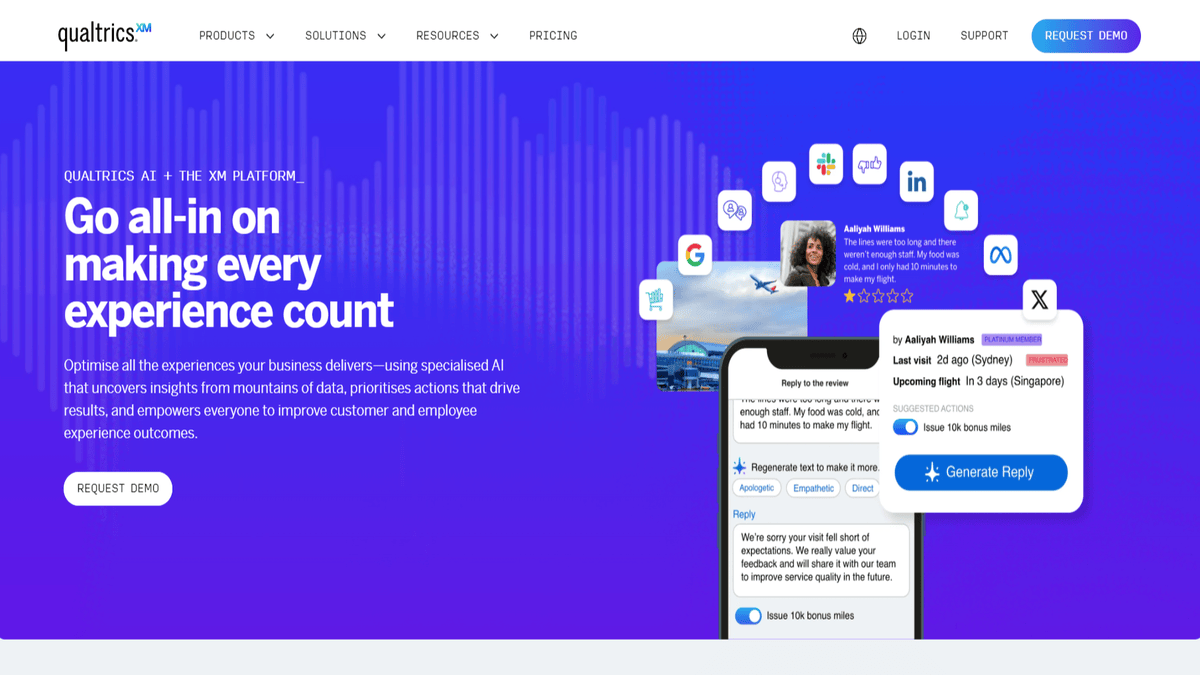
Qualtrics offers robust survey capabilities that help organizations measure employee engagement at an enterprise level. Its advanced analytics provide insights into employee sentiment and organizational culture, making it suitable for large companies seeking comprehensive engagement strategies.
Pros:
- Advanced analytics provide deep insights into employee sentiment.
- Highly customizable survey options cater to diverse needs.
Cons:
- Can be complex to implement for smaller organizations.
Pricing: Custom pricing plan based on organizational needs.
9. WorkTango: Best Employee Experience Platform
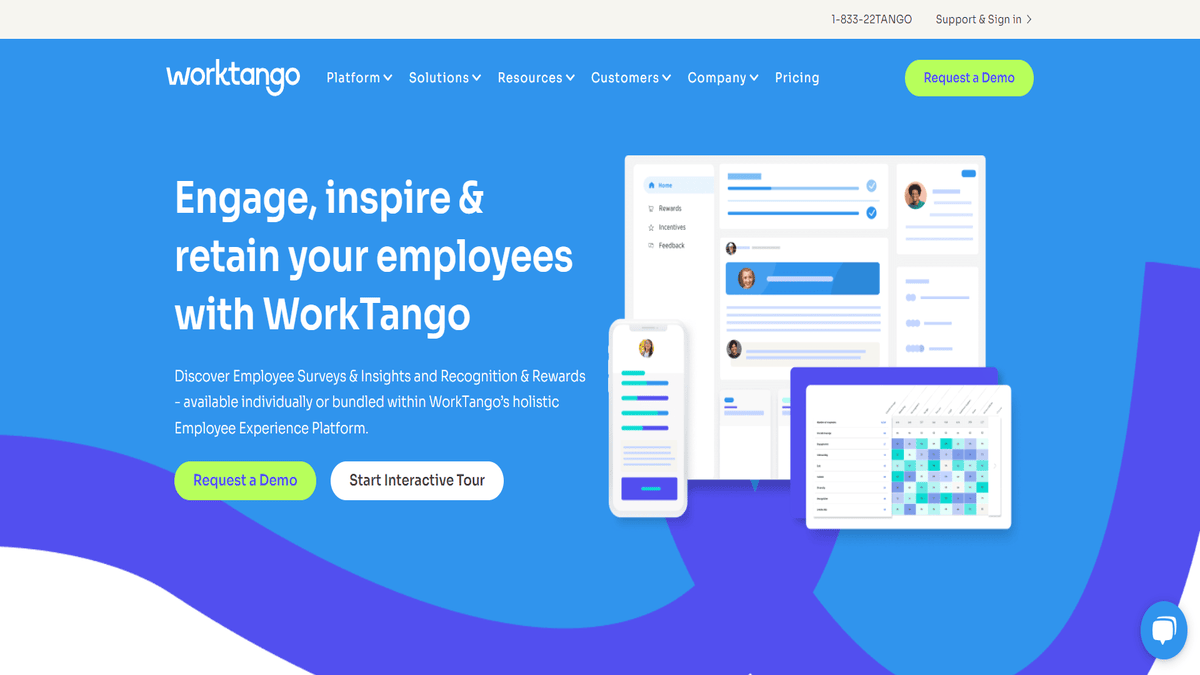
WorkTango is an employee experience platform designed to enhance workplace culture and engagement by providing tools for continuous feedback, surveys, and performance management. It helps organizations gather insights into employee satisfaction, track engagement levels, and foster a positive work environment.
Pros:
- Easy to gather employee insights quickly through surveys and pulse checks.
- Provides detailed analytics and benchmarking for informed decision-making.
- Anonymous feedback encourages honest responses.
Cons:
- Initial setup can be time-consuming and complicated.
- Can be expensive, particularly for smaller organizations.
- May require training to use effectively.
Pricing: Custom pricing plan based on needs.
10. Cooleaf: Best for Gamified Engagement
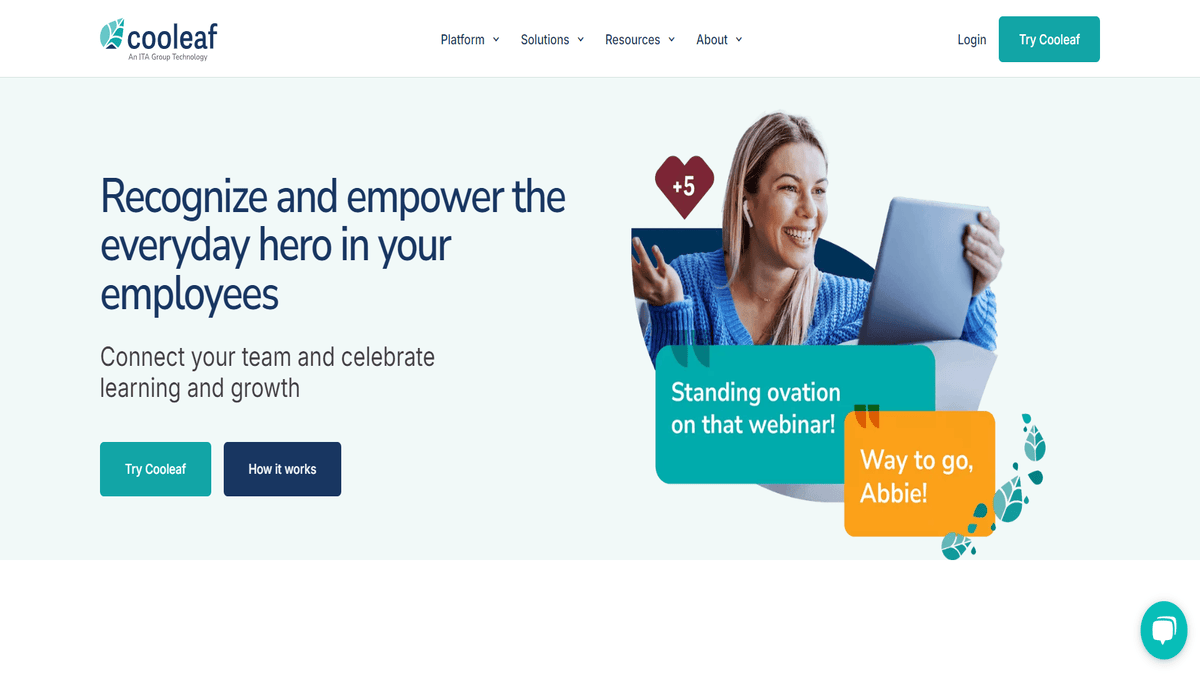
Cooleaf stands out with its gamified approach to employee engagement. The platform encourages participation through fun activities and challenges while offering rewards for accomplishments. Its intuitive interface makes it easy for employees to engage regularly.
Pros:
- Gamification elements boost participation and morale.
- Intuitive interface encourages regular use by employees.
Cons:
- May not suit all organizational cultures due to its playful approach.
Pricing: Custom pricing plan based on needs
Trends in Employee Engagement Software for 2024

Here are some key trends shaping the future of employee engagement solutions:
Advanced Analytics and Predictive Insights
Employee engagement software is now incorporating advanced analytics to offer deeper insights into employee morale and engagement. With predictive analytics, organizations can foresee changes in engagement levels and address potential problems early on. This data-driven approach empowers HR teams to make better decisions, helping to boost employee satisfaction and improve retention before issues grow into larger concerns.
Personalization and AI Integration
More companies are using artificial intelligence (AI) to customize engagement strategies for each employee. By analyzing feedback and data, machine learning helps create tailored experiences, ensuring employees get recognition and support that truly matter to them. This personal touch improves the employee experience, making them feel more appreciated and understood in the workplace.
Holistic Wellness Features
Many engagement platforms are now adding wellness features like mental health support and fitness programs, recognizing that employee well-being is key to keeping them engaged. These tools, such as meditation apps and wellness resources, help promote a healthy work-life balance. By offering these, companies create a more supportive workplace that values both the mental and physical health of their employees.
Gamification and Rewards
Gamification is becoming a common feature in employee engagement software, with elements like point systems, badges, and leaderboards adding a fun twist to everyday tasks. These features make work more enjoyable and rewarding, motivating employees to stay involved. By making tasks feel more like games, companies can boost participation and create a lively atmosphere that lifts team morale.
Automated Surveys and Algorithms
Automated surveys and smart algorithms are making it easier for companies to gather and analyze employee feedback. These tools quickly provide real-time insights into how employees feel, allowing organizations to address concerns more promptly. By simplifying the feedback process, companies can better adapt their engagement strategies to meet employee needs and improve overall satisfaction.
Mobile Accessibility
With the rise of remote work, mobile accessibility has become a critical feature in employee engagement software. Platforms designed with mobile-first functionality ensure that all employees—especially deskless workers—can engage with the software from any device. This accessibility enhances connectivity among teams and promotes a more inclusive workplace culture.
Enhanced Communication Tools
Effective communication remains a cornerstone of employee engagement. Modern software solutions are incorporating comprehensive communication tools that facilitate open dialogue between employees and management. Features like internal messaging systems, activity feeds, and announcement boards help keep everyone informed about company updates while encouraging collaboration.
Conclusion
Investing in the right employee engagement software is crucial for organizations aiming to enhance productivity, reduce turnover rates, and foster a positive workplace culture in 2024. Each of these top solutions offers unique features tailored to meet various organizational needs—from continuous feedback mechanisms to mobile accessibility for deskless workers. By leveraging these tools effectively, companies can create an engaged workforce that drives success and innovation in an increasingly competitive landscape.
FAQs for Employee Engagement Software Tools
Q1: What features does employee engagement software typically offer?
Ans: Employee engagement software usually includes features such as pulse surveys, performance feedback mechanisms, recognition programs, communication channels, analytics dashboards, and wellness initiatives. These tools help organizations gauge employee sentiment and improve overall engagement.
Q2: How important is employee engagement software for businesses?
Ans: Employee engagement software is crucial as it enhances communication, boosts productivity, improves retention rates, supports decision-making, and fosters a positive workplace culture. It helps organizations adapt to remote work needs and creates a more engaged workforce.
Q3: Can employee engagement software be beneficial for remote teams?
Ans: Yes, employee engagement software is particularly beneficial for remote teams. It provides tools for regular feedback, recognition, and communication that help maintain connections among team members, ensuring that all employees feel included and engaged regardless of their location.
Q4: What should businesses consider when choosing employee engagement software?
Ans: Businesses should consider factors such as user-friendliness, customization options, comprehensive features, integration capabilities with existing systems, scalability to accommodate growth, security standards, customer support availability, and overall cost-effectiveness.
Q5: How does employee engagement software enhance recognition within the workplace?
Ans: Many employee engagement platforms include recognition features that allow for peer-to-peer acknowledgments and public celebrations of achievements. This fosters a culture of appreciation and motivates employees by making them feel valued for their contributions.
Q6: How do employee engagement tools gather feedback from employees?
Ans: Employee engagement tools typically use surveys and polls to collect feedback from employees regularly. Pulse surveys provide quick insights into employee sentiment, while more in-depth surveys can explore specific areas of concern or interest.
Q7: What role does analytics play in employee engagement software?
Ans: Analytics in employee engagement software helps organizations track engagement levels over time and identify trends. By analyzing data from surveys and feedback mechanisms, companies can make informed decisions to improve workplace culture and address issues proactively.
Q8: Are there any specific industries that benefit more from employee engagement software?
Ans: While all industries can benefit from employee engagement software, sectors with high turnover rates or those heavily reliant on remote work—such as technology, retail, and healthcare—often see significant improvements in employee satisfaction and retention through these tools.
Q9: How can organizations ensure high adoption rates of the software among employees?
Ans: To ensure high adoption rates, organizations should choose user-friendly software that offers comprehensive training and support. Engaging employees in the selection process and demonstrating the value of the tool through clear communication can also encourage usage.
Q10: What is the typical pricing structure for employee engagement software?
Ans: Pricing for employee engagement software varies widely based on features and the number of users. Many platforms offer tiered pricing models that can start as low as $2 to $10 per user per month. Some also provide free trials or demos to help organizations evaluate their offerings before committing.

